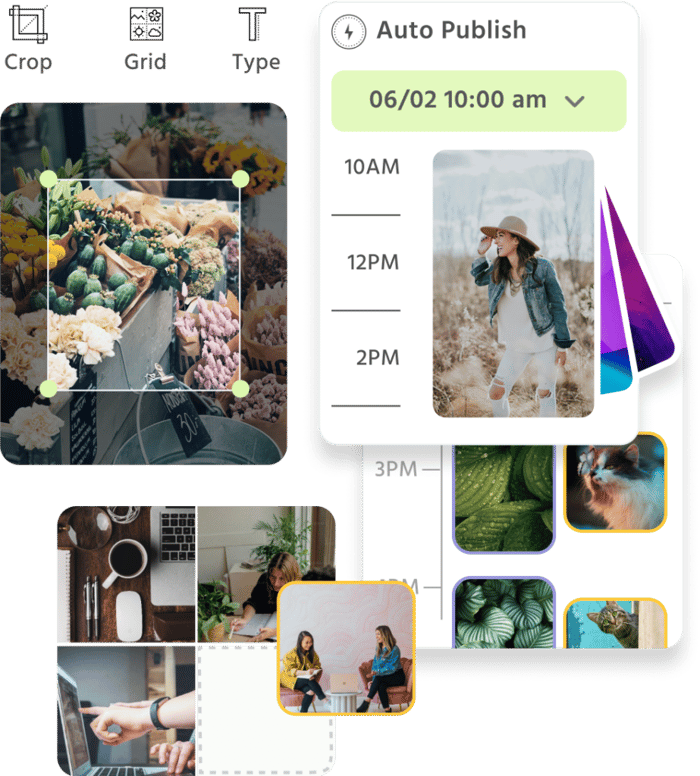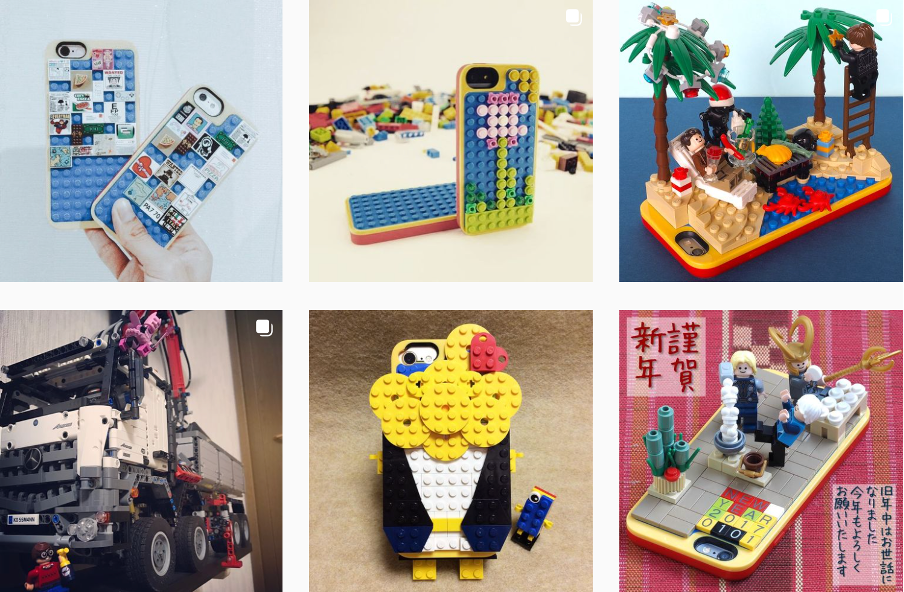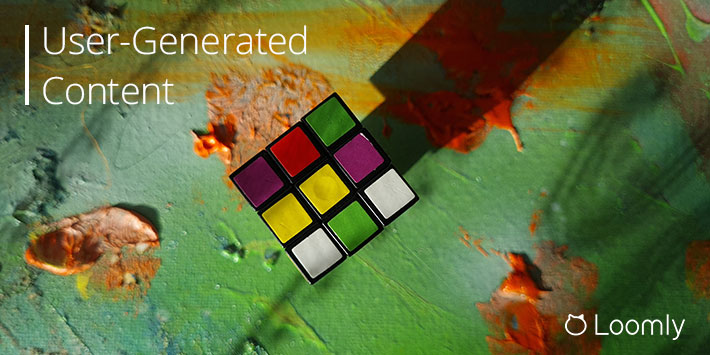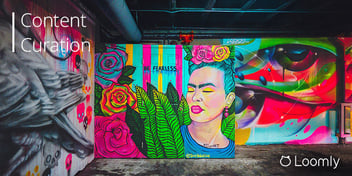User-Generated Content: The Definitive Guide
User-generated content (UGC) is a powerful weapon that every brand needs to embrace.
Why?
Well, for starters, a whopping 90% of consumers say user-generated content influences their buying decisions more than promotional emails and even search engine results.
No wonder more than 86% of companies include user-generated content as part of their marketing plans. Sadly, not all of them have a robust strategy in place.
So, in this guide, we’ll examine both the benefits and risks of user-generated content, take a look at some successful campaigns, and then show you how to implement a winning user-generated content strategy for your brand.

Manage all your social media accounts in one place.
Craft, schedule, & auto-post content to all your social channels, then track analytics and manage interactions from a single, easy-to-use dashboard.
What is User-Generated Content?
User-generated content (UGC) refers to any type of content – text, images, videos, reviews, etc. – that is created by a brand’s customers, fans, or followers.
Sometimes UGC is requested, for example, when a brand hosts a contest asking customers to send in photos of themselves with the product. Other times, UGC is discovered, for example, when a brand comes across a post or review praising their product or service.
Brands then share the content on their social media accounts, website, and other marketing channels.
User-generated content (also known as consumer-generated content) can be used by marketers to increase awareness, engagement, social proof, and even fuel a content curation strategy.
For example:
Aerie started their #AerieREAL campaign to encourage women to embrace how they look and submit unfiltered photos wearing their products:
As a result, Aerie can tap into a continuous source of content that promotes its brand message.
Benefits and Risks of User-Generated Content For Your Brand
User-generated content can work wonders for your brand. However, it can also turn into a disaster. Here are some benefits and risks you need to be aware of.
Benefits
Here are six key benefits of user-generated content.
UGC creates trust
Customers trust customers. And UGC is created by the people for the people.
Nowadays, consumers want to know exactly what they’re going to get before buying anything – whether it’s a product, service, or an experience. And a staggering 92% of consumers are more likely to trust a recommendation from another person over branded content.
UGC humanizes a brand
User-generated content builds a direct relationship with customers and humanizes a brand in an effortless but memorable way. Not only does it increase its value in the market, it also attracts the attention of the customers.
Almost half of marketing professionals (48%) believe that content created by customers can help humanize their marketing.
Consumers want brands with the same values as them, brands that they can relate to on a human level, and brands that “get them”.
UGC is authentic
Studies repeatedly show that user-generated content is perceived as more authentic than branded content.
- Nearly two-thirds of consumers (63%) say UGC creates a more “authentic” buying experience.
- A further 63% of consumers said they would rather buy from a company they consider to be authentic over a competitor.
- Consumers are twice as likely to say user-generated content is more authentic than content created by brands.
UGC drives purchasing decisions
All of the previous benefits of user-generated content ultimately lead to this one: the impact on purchasing decisions. Nearly 80% of people say user-generated content has a significant effect on their purchasing decisions.
UGC is cost-effective
Unlike influencer content, where brands may have to pay for content, user-generated content doesn’t cost anything. Plus, consumers find it’s 9.8x more impactful than influencer content.
Users are mainly interested in sharing their experience, building connections with like-minded people, or having a chance of winning something.
So, instead of paying for advertising, brands can let people run their campaigns.
UGC provides social proof
Your loyal customers are your best marketers.
Consumers are more likely to follow the opinion of other consumers than that of a brand. And by incorporating consumer-generated content into your marketing strategy, you can take advantage of this psychological factor.
Their testimonials and feedback act as social proof that leaves a lasting impression on the minds of your prospective customers, creating social trust for your brand.
Risks
Despite all the benefits of user-generated content, there are several risks you need to be aware of.
Copyright, privacy, and trademarks
Most brands realize that they need to get usage permission from the creator of user-generated content. But they don’t always consider the privacy and trademark issues of other people and brands.
Ownership and copyright: Ensure you have the right to share, use, alter, repurpose, or distribute the user-generated content. Just because a user shares a photo for a specific UGC campaign doesn’t mean you can use it in an advertising campaign a few weeks later.
Privacy: A user can only grant you usage or ownership rights to the photo itself. They can’t give you permission to use the “image and likeness” of any other people who may be in the picture.
Trademark: Similarly, if a person in the background is wearing an item of clothing with another company’s logo, you may require their permission to use it.
Regulatory concerns
You also need to consider the possibility that a user may innocently violate industry or federal regulations, which could result in severe penalties. It’s one thing to monitor your own staff, but you also need to ensure user-generated content is complicit.
Hijacking campaigns
It’s possible that users could hijack your brand’s campaign, harming your image rather than enhancing it.
For example, McDonald’s had their #MeetTheFarmers hashtag hijacked and changed to #McDstories. The outcome was a stream of scathing posts about customers’ experiences with McDonald’s. Even though McDonald’s pulled the campaign after a couple of hours, the hashtag continued to circulate.
Social issues
At some point, it’s likely that a piece of user-generated content could embarrass your brand. For example, a comment on your blog, a Tweet that goes viral, or a hashtag hijacking.
So, you need to have a plan for how to handle it.
It’s not wise to formulate your response in the middle of a social media firestorm. You might forget to consider a crucial angle, or someone will react in the heat of the moment according to personal beliefs rather than organizational values.
Examples of Successful User-Generated Content Campaigns
Let’s take a look at some successful user-generated content campaigns.
Lululemon #thesweatlife
Technical athletic apparel clothing brand Lululemon came up with #thesweatlife campaign to unite their audience and build a community around their business. The campaign encouraged customers to post pictures of themselves in Lululemon gear on Instagram.

Lululemon brand manager Lesia Dallimore says:
“We created the program as a way to connect with our guests and showcase how they are authentically sweating in our product offline. We see it as a unique way to bring their offline experiences into our online community.”
During the first couple of months, the brand accumulated over 7,000 photos of its customers (or “brand ambassadors”) on Instagram and Twitter. Also, the #sweatlife gallery created specifically for the campaign attracted more than 40,000 unique viewers.
The campaign works on two fronts:
Customers can see how the products look in various athletic positions, and the hashtag reinforces the brand’s mantra of “sweat once per day.”
Belkin X Lego iPhone cases
Belkin ran a UGC marketing campaign that included two favorite gadgets – the iPhone and Lego. Customers were asked to create cases for their phones using customizable Lego blocks, and then post the images onto Instagram using the hashtag #LEGOxBelkin.

This simple yet effective marketing campaign showed potential customers just how cool, diverse, and trendy Belkin cases could be in an authentic way and illustrated how customers sell the product for a brand.
GoPro’s social channels
GoPro is one of the marketing industry’s UGC pioneers.
Back in 2013, it was estimated that 6,000 GoPro videos were uploaded to YouTube per day. Today, the brand has over 10 million subscribers.

It’s a similar story on Instagram with 6,237 posts and 17.8m followers. The user-generated content is usually breathtaking and awe-inspiring – it’s easy to lose yourself in the amazing content.
Warby Parker’s #warbyhometryon
Warby Parker’s Home Try-on scheme allows people to select five frames to test out for five days at home. The ones they like best, they purchase online and return the test frames.
But, before they purchase, Warby Parker encourages trial wearers to post photos of themselves to social media with the hashtag #warbyhometryon.

Currently, there are over 24,000 Instagram posts featuring people looking for, and giving advice on, which Warby Parker frames to choose.
How to Implement a Winning User-Generated Content Strategy
Follow this six-step framework to implement a winning user-generated content strategy for your brand:
- Set specific user-generated content goals and objectives
- Choose the best social networks for your campaign
- Tell your audience what type of content you want
- Create a system to collect user-generated content
- Engage with your audience and build a better community
- Analyze and measure your user-generated content performance
Let’s jump in.
Step 1: Set specific user-generated content goals
Just like your other marketing strategies, your user-generated content plan needs specific goals and objectives to succeed.
Unfortunately, while 86% of marketers have embraced user-generated content, only 27% have a robust strategy in place.
Define your UGC campaign goals
Here are some typical user-generated content goals you could use:
- Boost brand awareness: For example, a hashtag campaign like Lululemon’s #TheSweatLife on Instagram could help create buzz about your product or service.
- Increase conversion rates: For example, a campaign that gathers customer reviews, like those on Amazon, can help you increase social proof and drive customers to purchase.
- Save time and money on content creation: For example, GoPro’s continuous stream of user-generated content fills their social media schedules.
Step 2: Choose the most effective social networks for your campaign
Based on your goals and target audience, you need to select the most appropriate social networks for your campaign.
What user-generated content works on each network?
Closely tied to choosing the social network, you’ll need to decide what type of content you’re looking for.
- Facebook: Great for sharing video content and stories about your brand. Also, don’t rule out posting user-generated content on Facebook ads.
- Twitter: Great for images, including GIFs, overcome the limited character space.
- Instagram: The go-to choice for most user-generated content. You’ll need to know how to regram, use Instagram Explore, and find content through hashtags.
- LinkedIn: Perhaps not as obvious as other networks, but useful to promote user content that aligns with your brand.
Step 3: Tell your audience what content you want
Having chosen your social network and content types, you need to let your audience know. Specify what types of content you’re looking for and what aligns best with your brand. If you’re not specific, you could end up with a load of unwanted content.
Be clear about what you’re willing to offer
While some brands, like GoPro, have a steady stream of content that users know gets featured, others need to offer an incentive. For example, National Geographic offered a $2,500 prize along with a “Galapagos expedition for two”. If you’re running a contest, ensure your rules are clear and the reward is proportional.
Not all users are motivated by contests – some are more than happy to have their content featured by a major brand. As per the examples above, hashtag campaigns, like #warbyhometryon, are just as popular.
Step 4: Create a system to collect user-generated content
Before you launch your campaign, you need to ensure you’ve got a system to collect user-generated content. It doesn’t need to be elaborate, just functional.
For example, National Geographic has a dedicated page on their website to collect user photo submissions for their contests. Other brands simply ask users to add a campaign hashtag to their social media posts.
Beware that collecting content on social media with a branded hashtag can sometimes be more challenging with ownership rights over photos and posts. But, if you collect content via an app or portal that includes rules, you can be more confident using it in official advertising campaigns without legal issues.
Include legal reviews
Given the risks of user-generated content, make sure you include a legal review and approval of content in your marketing workflows.
Don’t take without asking
Make sure you have an agreement to use a user’s work. It’s not ethical to simply lift a photo or post from one account and publish it on your own, even if you acknowledge the creator.
Credit the original creator
Whenever you publish user-generated content on your social media channels, make sure you credit the creator. Tag them directly in the post and indicate whether you’re using their visuals, words, or both.
Crediting content creators keeps them excited about posting and using your brand. Plus, it makes it easy for followers to verify that the content really was created by another fan, and encourages them to share, too.
Always give credit where credit is due.
Step 5: Engage with your audience and build a better community
One of the best things about user-generated content is that it usually sparks engagement, and gives you an opportunity to build a better community. You get the chance to engage with new people and encourage them to follow the brand.
Use social listening to find user-generated content you might have missed
It’s a good idea to listen out for all mentions of your brand on social media, even if the content isn’t tagged. You might get a fantastic user review that you can share with your audience.
Be prepared for anything
Not everyone has the best intentions when creating user-generated content. If you don’t monitor your submissions diligently, you run the risk of a PR crisis. If possible, you should have an employee dedicated to catching anything potentially harmful to your brand before too many people see it.
Step 6: Analyze and measure your user-generated content performance
Finally, you need to circle back to your goals to see if your user-generated content strategy is working:
- Are you raising brand awareness?
- Are you getting more conversions?
- Are you saving money on content creation?
In a 2018 survey, 41% of marketing professionals ranked content engagement as their top KPI for tracking user-generated content.
Learn from the submitted content
When you evaluate the submitted content, you might discover that customers are using your products or services in ways you hadn’t considered. Or, you might see that they like to use your product in combination with another product, which could lead to a possible partnership opportunity with another brand.
Learn from negative UGC, but showcase the positive
You might get some harmful content as well as all the positive vibes. Make sure you take on board any valid criticism but make a point of showcasing the positive content.
User-Generated Content in a Nutshell
User-generated content refers to any type of content – text, images, videos, reviews, etc. – that is created by a brand’s customers, fans or followers, and shared on their social media accounts, website, and other marketing channels.
Brands like UGC because it’s authentic, creates trust, and drives consumer purchasing decisions. Moreover, it’s a cost-effective way to humanize their brand and provide social proof.
Follow this six-step framework to implement a winning user-generated content strategy for your brand:
- Set specific user-generated content goals and objectives
- Choose the best social networks for your campaign
- Tell your audience what type of content you want
- Create a system to collect user-generated content
- Engage with your audience and build a better community
- Analyze and measure your user-generated content performance



